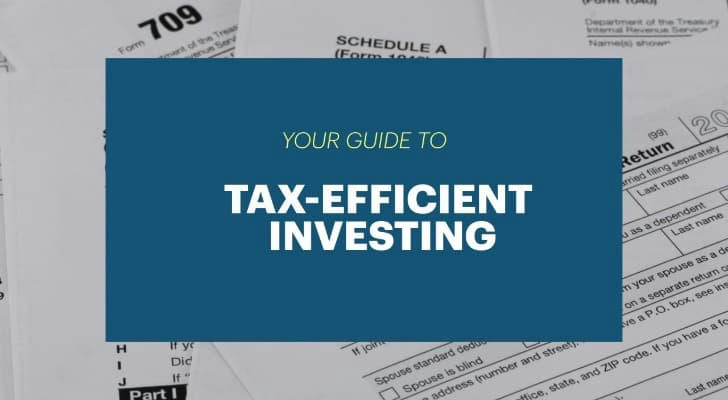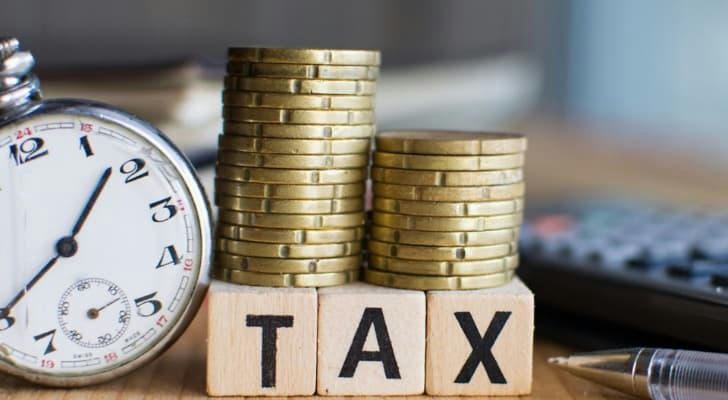Tax-Efficient Saving Strategies You Need to Know Now
When it comes to building wealth, how much you keep can be even more important than how much you earn. That’s why understanding tax-efficient saving strategies is essential — whether you're saving for retirement, a home, your children’s education, or just long-term financial stability.
💡 Simply put: Smart tax planning can help you pay less to the government and keep more for your future. Let's explore the most effective tools and tactics to maximize your savings while minimizing tax liabilities — backed by real examples, updated data, and expert insights.

🧾 Why Tax Efficiency Matters
Each dollar you save today is not equal if you don’t consider taxes. For example:
A dollar in a Roth IRA might be worth more than a dollar in a traditional brokerage account.
Earning a 6% return post-tax is significantly better than earning 8% pre-tax but paying high capital gains taxes later.
📊 Data Point: According to Fidelity (2024), tax-inefficient investment strategies can reduce annual returns by 0.5% to 2% — a significant drag over decades of compounding.
🔑 Strategy 1: Use Tax-Advantaged Accounts First
📌 401(k), 403(b), and Traditional IRAs (Pre-Tax Contributions)
These accounts let you contribute before taxes, reducing your taxable income in the current year. The funds grow tax-deferred, and taxes are paid when you withdraw in retirement.
2025 contribution limits for 401(k): $23,000 (or $30,500 if over 50)
Traditional IRA limit: $7,000 ($8,000 age 50+)
Potential tax savings: Thousands annually for high earners
🧠 Example: If Maria earns $80,000/year and contributes $10,000 to her 401(k), she might save around $2,200 in federal taxes (assuming a 22% tax bracket).
📌 Roth IRA and Roth 401(k) (Post-Tax Contributions)
You contribute after-tax dollars, but your withdrawals in retirement are completely tax-free — including gains. These are especially powerful if you're in a lower tax bracket now but expect higher rates in the future.
⚠️ Income limits apply to Roth IRA contributions: in 2025, phase-outs begin at $146,000 (single) or $230,000 (married).

🏦 Strategy 2: Invest Tax-Efficiently in Brokerage Accounts
Not everyone qualifies for retirement accounts, and many investors save beyond those limits. That’s where taxable brokerage accounts come in — but placement and timing matter.
💼 Asset Location: Match Investments to Account Type
Tax-inefficient assets (e.g. bonds, REITs) → Put in tax-deferred accounts
Tax-efficient assets (e.g. ETFs, index funds, growth stocks) → Use in taxable accounts
📊 Vanguard reports that this strategy alone can boost long-term portfolio returns by 0.75% per year.
📈 Use ETFs Over Mutual Funds
ETFs are generally more tax-efficient due to their "in-kind" share redemption mechanism. This means fewer capital gains distributions during holding periods.
📉 Strategy 3: Take Advantage of Capital Gains Rules
Capital gains tax is one of the most misunderstood topics — but also a key area for saving.
🕒 Long-Term vs. Short-Term Capital Gains
Short-term capital gains (assets held < 1 year): Taxed as ordinary income
Long-term gains (held > 1 year): Taxed at 0%, 15%, or 20% depending on income
💡 Tip: Hold appreciating stocks for over a year to benefit from lower rates.
✂️ Tax-Loss Harvesting
Sell losing investments to offset capital gains — or even reduce ordinary income by up to $3,000 per year.
Case Study – James' Year-End Move
James held $10,000 of a tech ETF that dropped to $7,000. He sold the ETF in December and used the $3,000 loss to offset gains on other sales. Result? He reduced his tax bill by $450 (assuming 15% capital gains rate), and repurchased a similar ETF after 31 days to stay invested.

🧒 Strategy 4: Use Tax-Advantaged Plans for Specific Goals
🎓 529 College Savings Plans
Contributions grow tax-free and are not taxed when used for qualified education expenses. Some states offer state tax deductions or credits.
- 2025 contribution limits: Technically no federal limit, but annual gift tax exclusion applies ($18,000 per donor per beneficiary)
📘 Bonus: Funds can now be rolled into a Roth IRA (with limits) if unused for education.
🏠 Health Savings Accounts (HSA) – The “Triple Tax Advantage”
Contributions are tax-deductible
Growth is tax-free
Withdrawals for medical expenses are tax-free
And if not used for health costs, funds can be withdrawn after age 65 like a traditional IRA (taxed at that point).
🧠 Few people realize HSAs can act as a stealth retirement vehicle — especially for high-income earners.
🚧 Strategy 5: Avoid These Common Pitfalls
❌ Overconcentrating in Tax-Inefficient Mutual Funds
Actively managed mutual funds often distribute large, unexpected capital gains — even in down markets. Opt for tax-managed funds or low-turnover ETFs.
❌ Early Retirement Account Withdrawals
Taking money out of 401(k) or IRA accounts before age 59½ can result in 10% penalties, on top of ordinary income taxes. Exceptions apply for certain situations, but it’s usually costly.
❌ Ignoring Required Minimum Distributions (RMDs)
Once you hit age 73 (for most retirees in 2025), you must start withdrawing from traditional retirement accounts — or face 50% penalties on the required amount not taken.

📊 At a Glance: Tax-Saving Strategy Chart
| Strategy | Tax Benefit | Best For |
|---|---|---|
| 401(k) / Traditional IRA | Tax-deferred growth, lower taxable income | Mid- to high-income earners |
| Roth IRA / Roth 401(k) | Tax-free growth and withdrawals | Younger workers, future high earners |
| HSA | Triple tax benefit | Those with high-deductible plans |
| 529 Plan | Tax-free education savings | Parents, grandparents |
| Tax-Loss Harvesting | Offsets gains and income | Active investors in taxable accounts |
| Asset Location Optimization | Minimizes taxes over time | Balanced portfolios |
🔐 Final Thoughts: Build Now, Save Later
Creating a tax-efficient savings strategy is more than just about investing — it’s about positioning your money where it works hardest after taxes.
✅ Quick Takeaways:
Prioritize tax-advantaged accounts first
Match the right investments to the right accounts
Use long-term capital gains and loss harvesting to reduce taxable events
Explore specialized accounts like HSAs and 529s
Avoid tax traps like early withdrawals and unmanaged RMDs
📈 Small moves today can lead to big rewards tomorrow. Don’t wait until tax season to get strategic — start now, and your future self will thank you. 💰🚀
